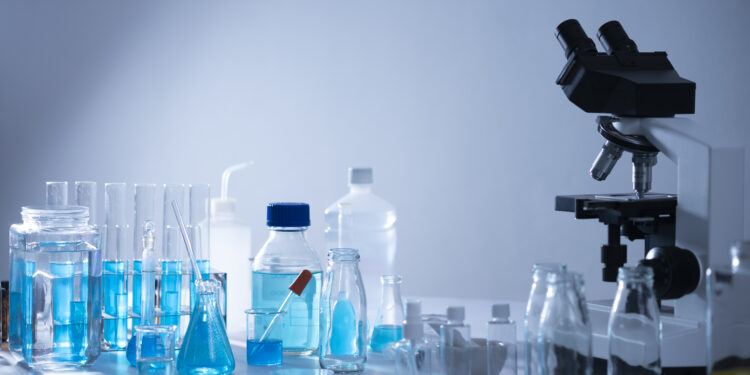Air Products and Chemicals Inc. (NYSE:APD) is a global leader in the industrial gases and chemicals industry, providing essential products and technologies that power manufacturing, energy production, and everyday life. Founded in 1940 and headquartered in Allentown, Pennsylvania, the company has grown into one of the world’s largest suppliers of atmospheric and process gases, including oxygen, nitrogen, argon, hydrogen, helium, carbon dioxide, and syngas. With more than 20,000 employees and operations spanning over 50 countries, Air Products serves customers across a diverse range of industries such as refining, chemicals, electronics, metals, food processing, medical, and transportation. Its gases and technologies are critical in enabling cleaner fuels, more efficient manufacturing, and sustainable energy solutions worldwide.
Over the past eight decades, Air Products has built a reputation for innovation, reliability, and operational excellence. The company’s business model centers on long-term, on-site contracts and large-scale production facilities, ensuring steady, recurring revenue and resilience across economic cycles. Air Products pioneered the concept of on-site gas production, designing and operating plants that deliver gases directly to customer facilities through pipelines or proprietary systems. This approach allows customers to improve efficiency, reduce costs, and minimize environmental impact while giving Air Products stable cash flows and long-term strategic partnerships with major global corporations.
In addition to its core industrial gas operations, Air Products has become a front-runner in the global energy transition through its ambitious investments in hydrogen production and carbon capture. It is the world’s largest producer of hydrogen and is actively developing clean hydrogen projects to support decarbonization in transportation, power generation, and heavy industry. Major projects include blue and green hydrogen facilities in Saudi Arabia, the United States, and Canada, positioning the company as a central player in the emerging hydrogen economy. This forward-looking strategy reflects Air Products’ mission to be the world’s safest and most profitable industrial gas company while driving sustainable growth through innovation and clean energy leadership.
The company’s strong balance sheet, global footprint, and technological expertise have made it a trusted partner for governments and industrial leaders seeking to reduce carbon emissions and improve energy efficiency. Air Products’ engineering capabilities extend beyond gases — it also designs and builds complex gas separation and liquefaction plants, fueling stations, and air separation units, all customized to meet the specific needs of clients in high-demand industries. Its combination of proprietary technology, deep process knowledge, and a disciplined capital allocation framework has enabled Air Products to deliver consistent returns and maintain its leadership position in a highly competitive global market.
Today, Air Products continues to balance its legacy industrial gas business with its growing portfolio of clean energy initiatives. As global demand for sustainable energy solutions accelerates, the company is uniquely positioned to benefit from the convergence of industrial efficiency and environmental responsibility. With over 80 years of experience, a market capitalization exceeding $57 billion, and a proven track record of operational excellence, Air Products stands as a pillar of modern industry — a company whose products and technologies quietly sustain the world’s most critical processes while shaping the clean energy future.
Institutional Sentiment Turns Cautious Amid Portfolio Rebalancing
Recent disclosures show that some institutional investors are beginning to reduce their exposure to Air Products. Most notably, Mitchell Sinkler & Starr PA cut its stake by 89.1% during the second quarter of 2025, selling 27,474 shares and retaining only 3,369 shares worth roughly $950,000 at quarter-end. While not catastrophic in isolation, such a drastic reduction reflects growing caution among fund managers who may view the stock as fully valued or facing cyclical headwinds.
Other firms, such as LRI Investments LLC and SPC Financial Inc., slightly increased their holdings, but the overall picture shows a market in repositioning mode rather than accumulation. Despite the fact that institutional investors still own approximately 81.66% of APD’s outstanding shares, this high concentration also amplifies downside risk — any coordinated trimming of positions by large funds could accelerate selling pressure.
In addition, the mixed pattern of accumulation and liquidation suggests investors are divided on whether Air Products’ $57.26 billion market capitalization and 37x earnings multiple can be justified given softening demand, rising costs, and limited earnings growth.

CHECK THIS OUT: Gyrodyne (GYRO) Lands $28.74M Deal for 49 Acres in St. James, NAV Jumps 6% and NioCorp (NB)’s $1.14B Elk Creek Project Set to Transform U.S. Critical Minerals Supply.
Insider Selling Undermines Confidence
The caution isn’t limited to institutional investors. Insider selling has also entered the picture, with Vice President Victoria Brifo unloading 1,359 shares on August 5, 2025, at an average price of $292.38, totaling nearly $397,000. After the transaction, she retained just 8,686 shares, reflecting a 13.53% decrease in her position.
While one sale does not always imply lack of confidence, the timing is notable — the sale came shortly after management reaffirmed its long-term hydrogen investment plans and raised guidance modestly. When top executives sell during periods of optimistic messaging, it can raise questions about whether insiders view the stock as near its short-term peak.
Corporate insiders collectively own only 0.41% of Air Products’ shares, meaning that even modest sales can carry outsized signaling value.
Earnings Beat Masks Structural Headwinds
Air Products reported $3.09 EPS for the quarter ended July 31, 2025, surpassing consensus estimates of $2.99 per share by $0.10. Quarterly revenue rose 1.2% year over year to $3.02 billion, slightly above expectations of $2.95 billion. The company’s net margin came in at 12.86%, while return on equity stood at 15.11%.
On the surface, this appears healthy. But a closer look reveals cracks beneath the headline growth. Last year, APD posted $3.20 EPS in the same quarter, meaning that despite a modest top-line uptick, profitability actually declined. This trend underscores a deeper issue: Air Products’ traditional gas operations are stagnating, with incremental growth largely dependent on price adjustments rather than volume expansion.
Meanwhile, the company’s aggressive push into clean hydrogen projects has dramatically raised capital expenditures and balance sheet leverage. With a debt-to-equity ratio of 0.93, Air Products is taking on more financial risk at a time when free cash flow growth is limited. Many of its hydrogen ventures — such as the massive NEOM project in Saudi Arabia — carry long payback periods and uncertain economics, especially if global hydrogen adoption falls short of optimistic forecasts.
The Hydrogen Gamble: Ambition Meets Execution Risk
Air Products’ pivot toward large-scale hydrogen production is central to its strategy but also represents its biggest risk. The company is spending tens of billions of dollars developing hydrogen infrastructure that depends heavily on government subsidies, carbon pricing, and long-term customer offtake agreements.
While management frames this as a visionary move toward sustainable energy leadership, it also exposes shareholders to execution and policy risk. Unlike its stable industrial gases business — which enjoys recurring, contract-based revenue — hydrogen remains a speculative frontier. Costs of electrolysis, energy sourcing, transportation, and storage remain high, and competitors like Linde and Air Liquide are pursuing similar strategies, diluting potential first-mover advantage.
This shift in focus has already drawn criticism from activist investors such as D.E. Shaw, who urged Air Products to cut back on excessive capital spending and focus instead on shareholder returns and core operational performance. The tension between long-term growth ambition and near-term return discipline is likely to persist, especially if cash generation slows or project costs escalate.
Valuation Looks Expensive as Growth Slows
Despite recent weakness, Air Products’ shares remain richly valued relative to peers. Trading at around $257 per share as of Friday’s close, the company’s valuation represents a price-to-earnings ratio of 37.02 and a P/E/G ratio of 5.33, metrics that suggest a premium typically reserved for high-growth technology firms rather than mature industrial producers.
At a time when year-over-year earnings have declined and revenue growth sits near 1%, such multiples may be difficult to justify. Moreover, the stock’s beta of 0.83 means that while it’s less volatile than the broader market, it could still underperform in a sector rotation away from high-valuation industrials or if broader economic growth slows.
Compounding the issue is the company’s dividend payout ratio of 103.02%, which implies that Air Products is paying out more in dividends than it generates in earnings on a GAAP basis. Although management emphasizes dividend consistency as a core strength — with a current yield of 2.8% — sustaining this payout long-term will likely require either debt issuance or improved earnings, both of which appear uncertain under current conditions.
Analyst Optimism May Be Overstated
Wall Street sentiment toward Air Products remains cautiously positive, but the tone has shifted from outright bullishness to moderation. According to MarketBeat data, the stock carries a “Moderate Buy” consensus rating, with an average target price of $330.00. Out of fifteen analysts covering APD, one rates it a Strong Buy, eight rate it Buy, five maintain Hold ratings, and one assigns a Sell rating.
Firms such as Wells Fargo, Mizuho, and Goldman Sachs have recently raised their price targets to the $320–$345 range, but these revisions appear to reflect technical rebounds rather than fundamental improvement. The company’s earnings guidance for full-year 2025 — between $11.90 and $12.10 per share — is only marginally above 2024’s results, implying that much of the stock’s expected upside is already priced in.
Analysts projecting aggressive growth may be overlooking several near-term risks, including project delays, weaker industrial gas volumes, and potential policy shifts that could affect hydrogen subsidies.
The Bearish Case: Momentum Without Margin
Air Products may continue to enjoy short-term support from dividend seekers and ESG-focused investors, but its long-term risk profile is growing. Declining profitability, insider selling, flattening revenue growth, and elevated capital commitments paint a picture of a company struggling to balance ambition with discipline. The hydrogen investments that once excited investors now appear to be a double-edged sword — symbolizing innovation on one hand and financial overreach on the other.
Institutional investors trimming stakes, combined with insider divestments and stretched valuation metrics, suggest that sentiment could turn swiftly if another earnings miss or project setback emerges. With a heavy balance sheet, narrowing margins, and a dividend payout exceeding earnings, Air Products faces an uphill battle to sustain its market premium in a tougher macroeconomic environment.
In short, Air Products and Chemicals remains an industrial titan with a storied legacy — but one that may be approaching the limits of its current growth narrative. For investors seeking predictable returns, the company’s hydrogen gamble and weakening earnings quality could turn an iconic name into a long-term underperformer.
READ ALSO: CEL-SCI (CVM) Stock Could Explode After Saudi Breakthrough Deal and Ondas Holdings (ONDS) Lands $2.7M Defense Order.






